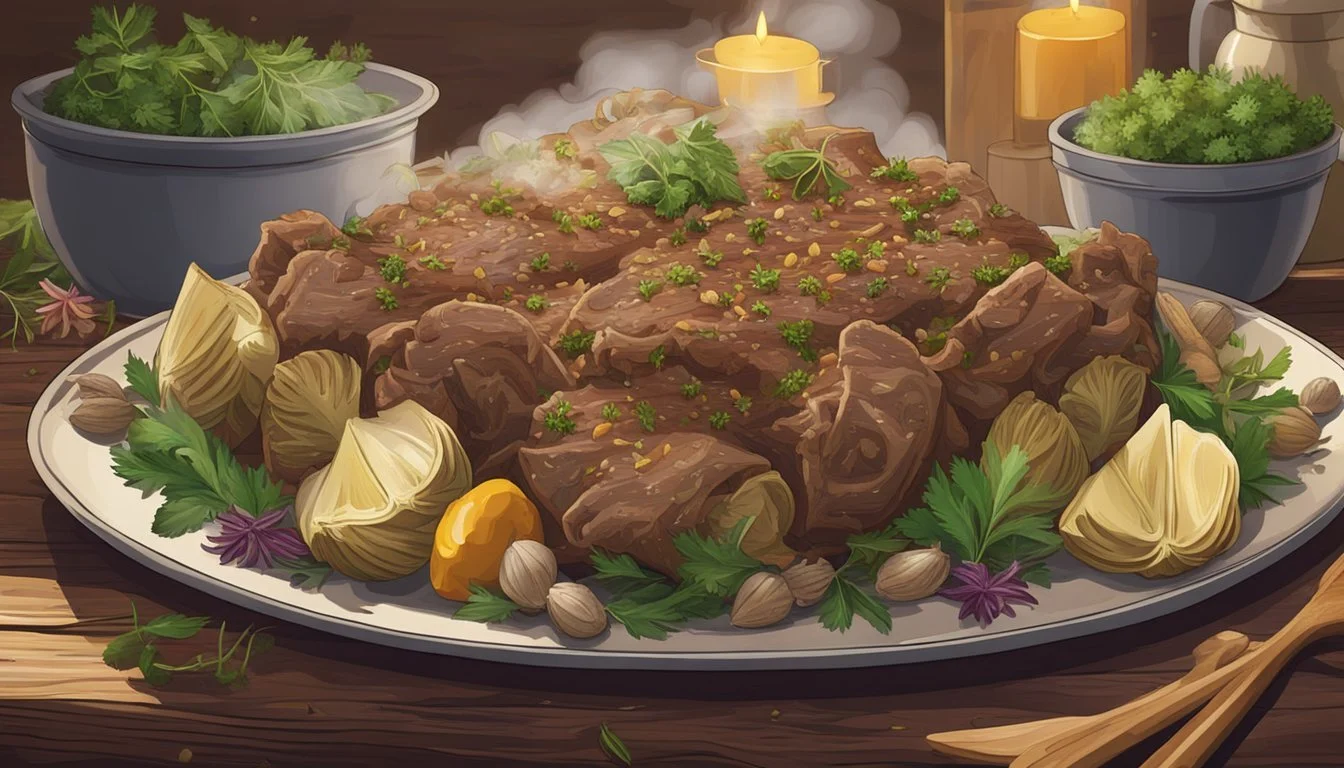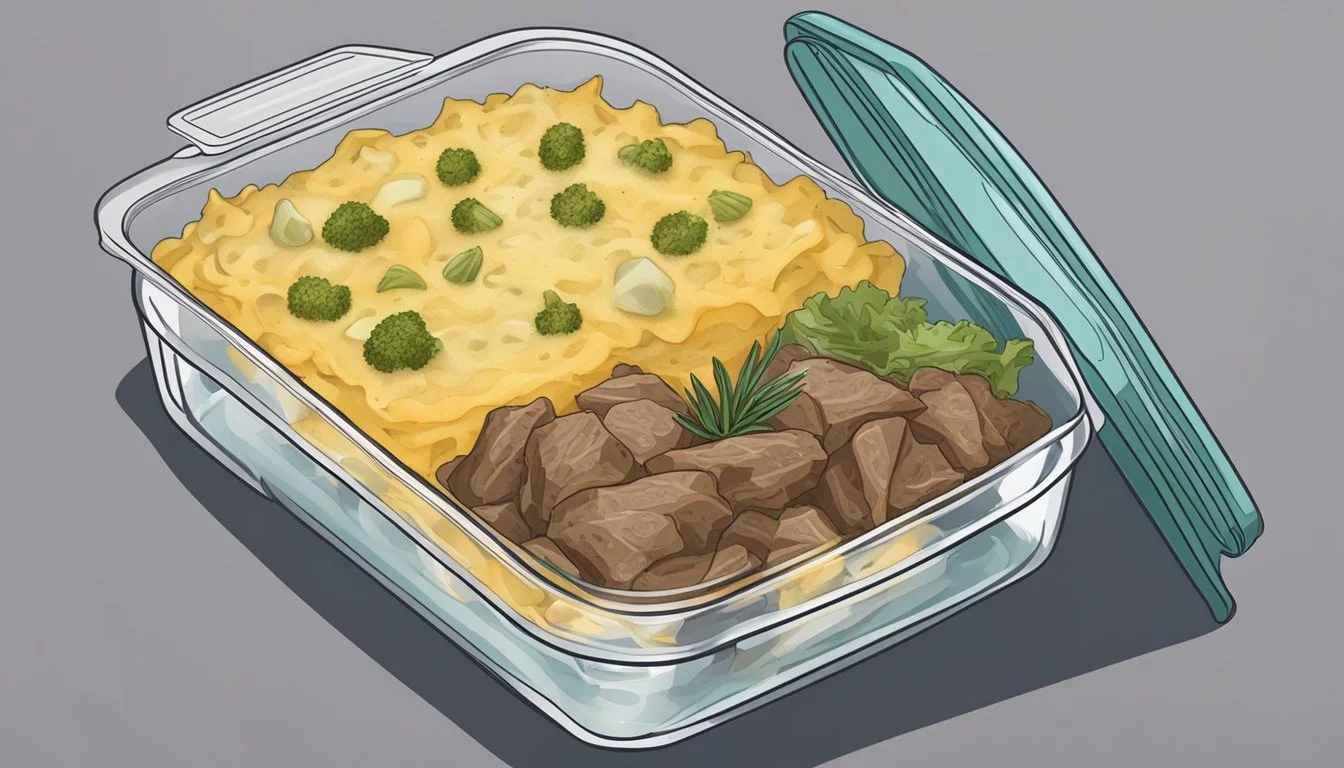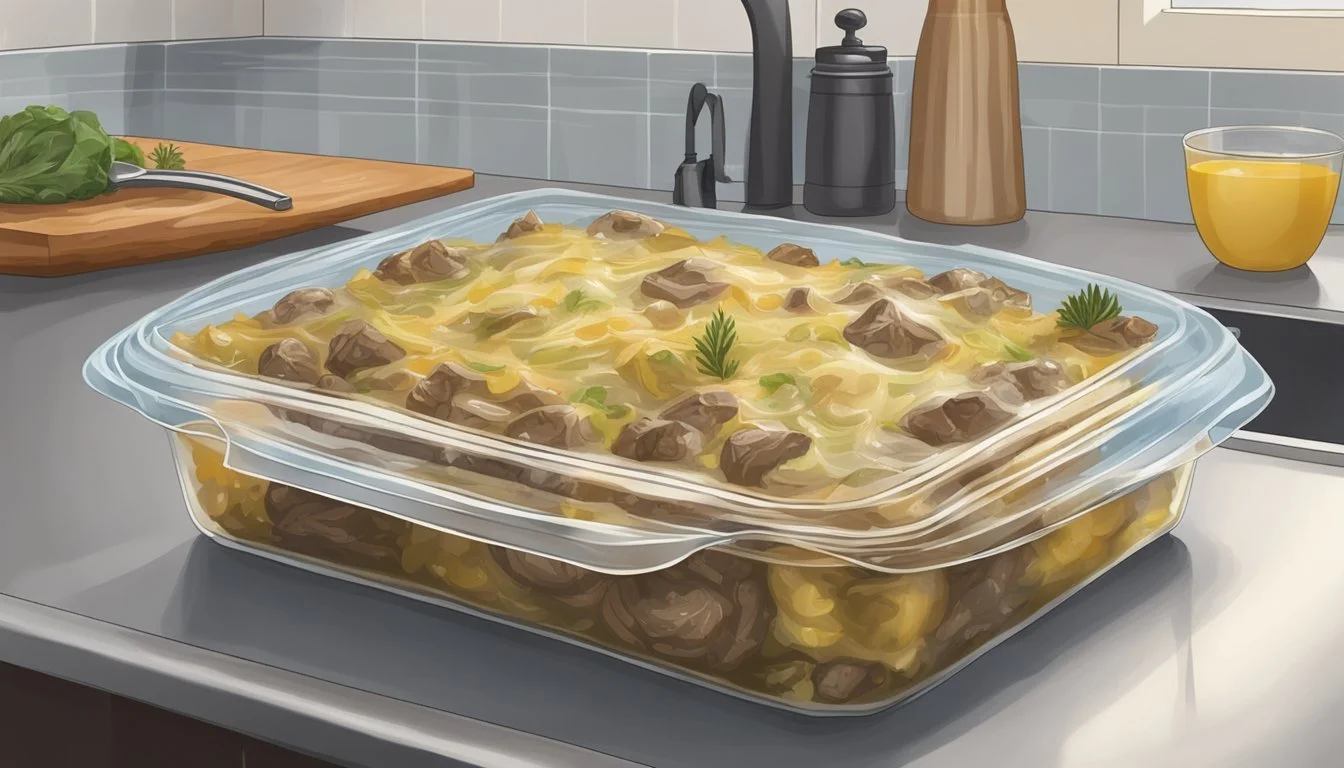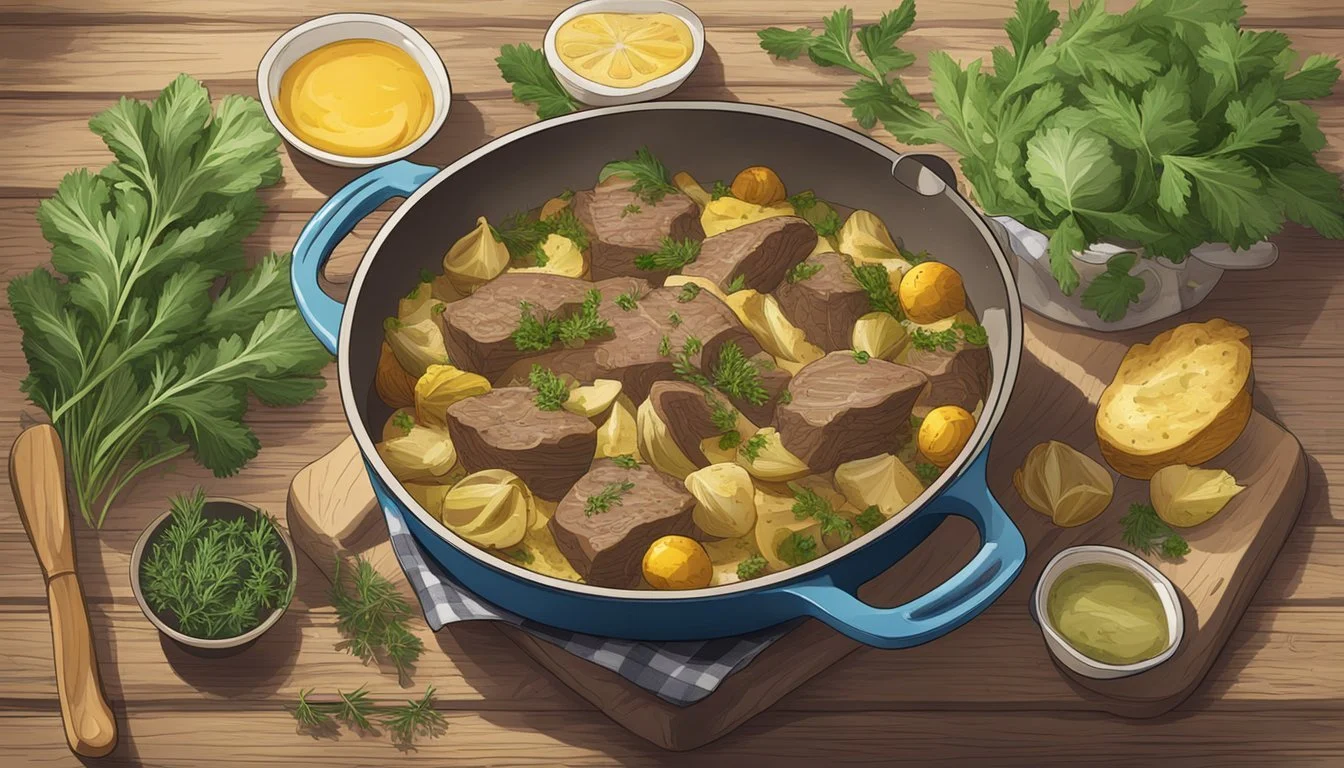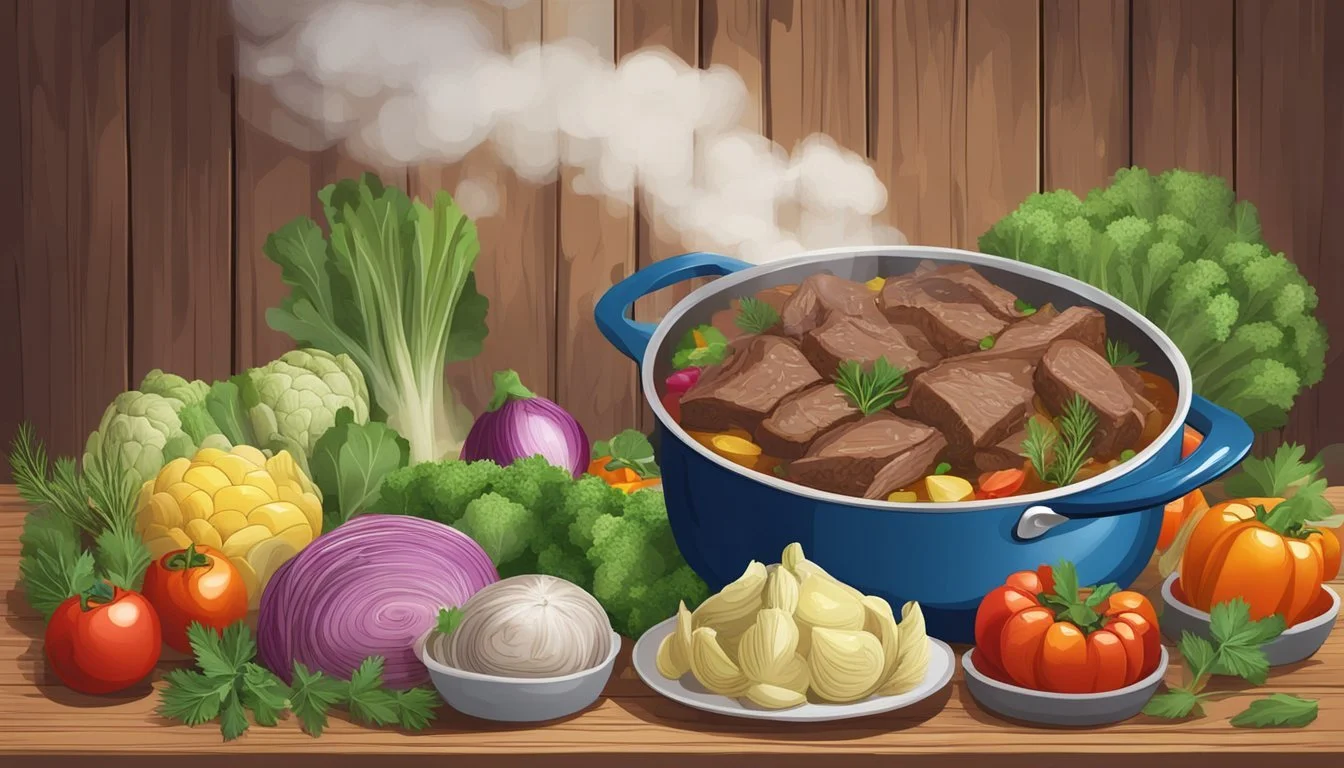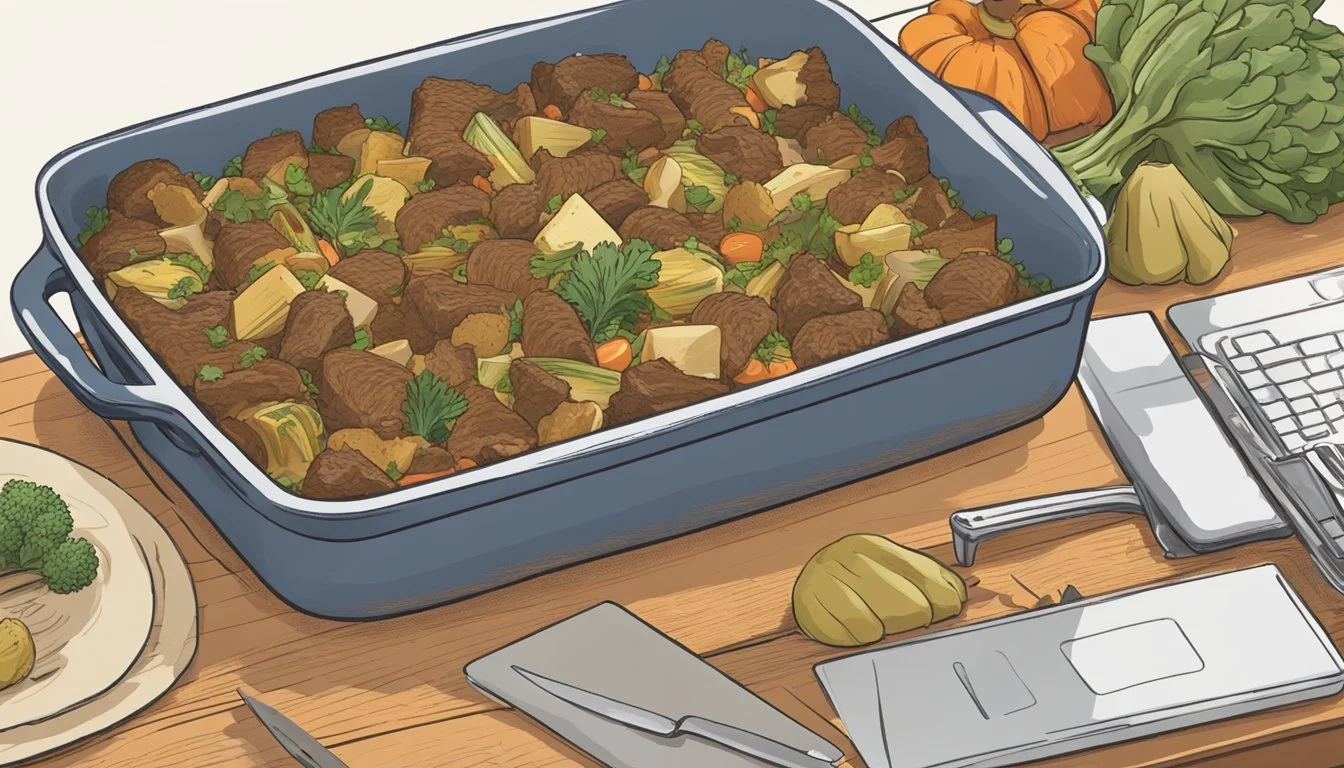How Long Does Beef and Artichoke Casserole Last?
Storage Tips and Shelf Life
Beef and artichoke casserole is a delicious and nutritious dish that many enjoy, but knowing how long it can be safely stored is essential for maintaining its quality and ensuring food safety. A properly stored beef and artichoke casserole can last up to four days in the refrigerator. This storage time allows for the enjoyment of leftovers without worry.
For longer storage, freezing the casserole is a viable option. Ensure the dish is placed in an airtight container or tightly wrapped in foil to prevent freezer burn. When frozen properly, beef and artichoke casserole can last for up to three months, maintaining its flavor and nutritional value.
Storing beef and artichoke casserole correctly not only maximizes shelf life but also retains its delightful taste. Take care to cool the casserole completely before refrigerating or freezing to avoid any condensation, which could affect the texture and quality.
Storage Fundamentals
Properly storing beef and artichoke casserole involves understanding the components of the dish and identifying the perishable ingredients.
Understanding Casserole Composition
Casseroles typically contain a mix of meat, vegetables, sauces, and sometimes grains or pasta. Beef and artichokes are the main perishable elements in this dish. Ground or whole beef needs refrigeration within 1-2 days of cooking to prevent spoilage. Artichokes, whether included fresh or cooked, also require careful storage.
The type of container used can impact shelf life. Airtight containers or tightly sealed dishes help maintain freshness and prevent bacterial growth. Vacuum-sealed bags can be especially effective. Keeping the casserole in the refrigerator at 40°F (4.4°C) maximizes its lifespan.
The dish generally keeps for 3-5 days in the fridge. For longer storage, consider freezing. When frozen promptly after cooking, it can last up to six months while maintaining its quality.
Identifying Perishable Ingredients
Beef: Raw or cooked beef is highly perishable. Keep it refrigerated at all times. If uncertain about its freshness, check for any discoloration or off smells. Refrigerated beef keeps for 3-5 days, but freezing extends its life significantly.
Artichokes: Fresh artichokes last 7-10 days in the fridge. Cooked artichokes, particularly in a casserole, can spoil faster if not stored well. Ensure they remain moist by wrapping them with a damp paper towel or placing them in a plastic bag with a few drops of water.
Sauces and Dairy: If the casserole contains dairy (like cheese or cream), it becomes more perishable. Dairy-inclusive casseroles might need to be consumed within 3-4 days.
Lists and Tips for Storage:
Use airtight containers
Maintain fridge temperature at 40°F (4.4°C)
Check for spoilage signs such as bad odors or unusual colors
Always prioritize food safety to enjoy beef and artichoke casserole without health risks.
Refrigeration and Shelf Life
Proper refrigeration techniques and understanding shelf life are crucial for maintaining the quality and safety of beef and artichoke casserole. This ensures the meal remains delicious and free from harmful bacteria.
Optimal Refrigeration Techniques
Beef and artichoke casserole should be stored in an airtight container. This helps prevent contamination and slows down the growth of harmful bacteria. Refrigerate the casserole within two hours of cooking to ensure food safety.
To maximize freshness, place the container in the coldest part of the refrigerator. The ideal temperature for storing casseroles is below 40°F (4°C). Label the container with the date to keep track of its storage time.
If you plan to store for longer periods, consider portioning the casserole into smaller containers. This allows for quicker cooling and minimizes the risk of spoilage. When reheating, make sure the casserole reaches an internal temperature of 165°F (74°C).
Shelf Life Expectancy
When properly refrigerated, beef and artichoke casserole typically lasts 3-5 days. This duration ensures the meal remains safe to eat and retains its nutritional benefits, including fiber from the artichokes.
Leftovers should not be kept beyond this timeframe, as harmful bacteria can grow even in cold environments. Frozen storage can extend shelf life up to three months. Before freezing, consider portioning and wrapping individual servings to preserve taste and texture.
Keep in mind that cooked dishes generally degrade in quality over time. Even if they appear and smell fine, always adhere to recommended shelf life periods to avoid potential health risks. Following these guidelines ensures both the safety and taste of your casserole.
Freezing and Long-Term Preservation
Freezing beef and artichoke casserole effectively extends its shelf life. Proper preparation and correct thawing and reheating techniques ensure the casserole maintains its quality and taste.
Preparing Casserole for Freezing
Cool the beef and artichoke casserole completely before freezing. This step prevents condensation and ice crystals from forming, which can alter texture.
Use airtight containers or heavy-duty freezer bags to store the casserole. Label the containers with the date to keep track of storage time. Ideally, the casserole should be consumed within 2-3 months for best quality. Ensure even distribution of ingredients in the container for uniform freezing.
If using a baking dish for freezing, cover tightly with plastic wrap and aluminum foil. Double wrapping helps prevent freezer burn, which can compromise flavor and texture. For added protection, vacuum-sealing can be an excellent option.
Thawing and Reheating
Thaw the casserole overnight in the refrigerator. This slow thawing method helps to maintain the dish's texture and flavor by reducing moisture loss.
Reheat the casserole in an oven preheated to 350°F (175°C) for about 20-30 minutes, or until it reaches an internal temperature of 165°F (74°C). Cover the dish with aluminum foil while reheating to keep it from drying out.
For quicker thawing, you can use a microwave, but be sure to stir frequently to ensure even heating. Avoid reheating the casserole multiple times, as it can lead to loss of quality and potential food safety concerns.
Signs of Spoilage
Key indicators of spoilage include changes in appearance and smell, as well as potential health risks posed by consuming spoiled food.
Visual and Olfactory Indicators
Visual signs of spoilage in beef and artichoke casserole can include the presence of mold, discoloration, and changes in texture. Mold often appears as green, white, or black spots, while beef may develop a brownish or grayish hue. Artichokes may turn darker or become slimy.
Olfactory indicators involve any sour or rancid smells. These odors signal the presence of harmful bacteria. A fresh casserole should have a pleasant, savory aroma. If it emits a strong, unpleasant odor, it’s a clear sign that the dish has gone bad and should not be consumed.
Health Risks of Spoiled Foods
Spoiled beef and artichoke casserole can harbor harmful bacteria such as Salmonella, E. coli, and Listeria. These bacteria can cause food poisoning, leading to symptoms like nausea, vomiting, and diarrhea.
Consuming spoiled food increases the risk of foodborne illness. Always err on the side of caution: if any visual or olfactory indicators of spoilage are present, discard the casserole immediately to prevent health risks. Thus, ensuring proper storage and quick consumption are key preventative measures.
Healthy Cooking Alternatives
Making healthier versions of beef and artichoke casserole involves utilizing nutrient-dense vegetables and opting for lean meats or alternatives. Here are some key strategies:
Incorporating Nutrient-Rich Vegetables
Adding nutrient-rich vegetables such as cauliflower, spinach, and broccoli to casseroles can significantly boost their healthiness. These vegetables are packed with antioxidants, vitamins, and minerals essential for overall health. Spinach and artichoke hearts are excellent options, providing fiber and antioxidants that support digestion and immune function.
For additional texture and nutrients, include cauliflower which can also serve as a low-carb substitute for more starchy ingredients. Broccoli and green beans add vital nutrients and can be easily incorporated.
Choosing Lean Meats and Alternatives
Opting for lean meats or meat alternatives can make casseroles healthier. Ground turkey or chicken are great substitutes for ground beef, reducing saturated fat intake. For a vegetarian option, consider using plant-based proteins such as lentils or black beans which also offer high fiber and protein content.
Olive oil can be used instead of butter to sauté ingredients, adding healthy fats without sacrificing flavor. Ensuring meat and alternatives are cooked well enhances their texture and taste, making the dish both nutritious and enjoyable.
Recipe Variations and Enhancements
Adding variety to a beef and artichoke casserole can create new flavors and make it an even more gratifying dish. By incorporating different ingredients and flavor boosters, cooks can adapt the recipe to suit various tastes and dietary preferences.
Alternate Ingredients and Substitutions
There are many substitutions and additions that can alter the traditional beef and artichoke casserole. Ground turkey can be used in place of beef for those looking to reduce fat content. For a heartier option, consider incorporating cooked bacon or diced ham.
Vegetarians can replace the meat with sautéed mushrooms or lentils. Dairy variations such as Parmigiano-Reggiano cheese, milk, or heavy cream can create a creamier texture. Bread crumbs can be swapped with plain breadcrumbs mixed with dried oregano for added crunch.
Different types of pasta, such as penne or rotini, can be added to make the casserole more filling. Those avoiding gluten might opt for gluten-free pasta or rice. Experimenting with these variations allows for a personalized culinary experience.
Flavor Enhancers
Enhancing the taste of a beef and artichoke casserole involves the addition of various spices and seasonings. Garlic powder and onion powder are classics that can elevate the dish’s depth. Black pepper provides a subtle kick, while dried oregano introduces a touch of herbal complexity.
For a more robust savory profile, add Italian sausage to the beef mixture. A topping mix of parmesan cheese or a finer Parmigiano-Reggiano cheese can be sprinkled over the casserole before baking for a crispy, flavorful crust.
Fresh herbs such as parsley can be mixed in before serving to brighten the dish. Butter can be used to sauté the vegetables for a richer taste, while a drizzle of olive oil can add a hint of Mediterranean flair. Personalizing these flavor enhancers turns a simple casserole into a gourmet delight.
Serving Suggestions
To elevate your beef and artichoke casserole experience, pair it with well-chosen side dishes and present it attractively to showcase its deliciousness.
Accompaniments
Salads make a fresh and crisp addition to balance the casserole's rich flavors. Opt for green salads with a light vinaigrette or a classic Caesar salad.
Rice or quinoa can add a hearty, complementary texture. These grains can absorb the casserole's savory juices, enhancing the overall meal.
Steamed or roasted vegetables like broccoli, asparagus, or carrots provide a healthy, colorful side. Their freshness will contrast well with the casserole's creamy filling.
Incorporate bread such as French baguette or garlic bread, perfect for mopping up any remaining sauce.
Presentation Tips
Serve the casserole in a well-greased, attractive casserole dish to maintain its structure and appeal. Ensure that the top layer is golden and slightly crispy by broiling it for a few minutes before serving.
Garnish with chopped parsley or grated Parmesan to add a finishing touch.
For individual servings, cut the casserole into neat squares or slices and place them on plates with a side of salad or vegetables.
Using a large serving spoon, carefully scoop portions to preserve the layers.
Warm the bread just before serving to ensure it's crisp and aromatic, making your meal more inviting.
Online Sharing and Community
Leveraging social media and participating in food communities can greatly enhance one's culinary journey. Sharing recipes online boosts interaction and provides inspiration to fellow home cooks.
Sharing Recipes on Social Media
Home cooks frequently share their recipes on social media platforms like Facebook, Instagram, Pinterest, and TikTok. These platforms allow users to post detailed recipe steps, ingredient lists, and cooking tips, often accompanied by appealing photos or short videos.
On Facebook, users can join cooking groups where they share their culinary creations and discuss techniques. Instagram users often post aesthetically pleasing photos of their dishes using hashtags to reach a wider audience. Pinterest is ideal for organizing recipes on boards and discovering new ones. TikTok is known for quick, engaging recipe videos that can reach a viral audience swiftly.
Engaging with Food Communities
Engaging with food communities involves more than just sharing recipes; it is about connecting with like-minded individuals. In Facebook groups, members can seek advice, share successes, and learn from each other’s experiences. These groups often host challenges and live cooking sessions to foster a sense of community.
Instagram hosts live cooking shows where followers can interact in real-time with chefs and home cooks. On Pinterest, users can comment on pins, provide feedback, and save the ones they love. TikTok allows users to duet and stitch videos, creating collaborative cooking content that brings the community closer together. Food communities thrive on interaction, support, and shared passion for cooking.

